Innovative Approaches to Windcatcher Design: A Review on Balancing Tradition Sustainability and Modern Technologies for Enhanced Performance
Abstract
:1. Introduction
1.1. Theoretical Background
1.2. Sustainability and Preservation of Traditional Windcatchers
1.3. Integration of Modern Technologies with Windcatcher Systems
1.4. Hybrid Systems and Windcatcher Performance
1.5. Artificial Intelligence in Heritage Planning
2. Materials and Methods
2.1. Data Collection
2.2. Data Extraction
- Title: The title of each article was recorded to provide a clear indication of the research focus;
- Citation: Full citation details, including authors, publication year, journal name, and DOI (if available), were recorded for referencing and reproducibility purposes;
- Area of Research: Each article was classified based on its area of research. The areas for research identified in the extracted studies were categorized as follows:
- Purpose: Each study’s objectives or hypotheses were extracted to understand the research questions driving the investigation;
- Scope: The scope of each article was noted, indicating whether the research focused on a particular geographical region, a specific windcatcher design, or a particular climate type;
- Methods: The methodologies employed in each study, such as experimental designs, computational simulations (CFD), energy modeling, or case studies, were extracted to assess the validity and reliability of the results;
- Results: Key findings from each study were extracted, including performance data such as airflow efficiency, cooling potential, or energy savings related to windcatcher designs;
- Discussion Points: The key discussion themes of each article were noted to capture the main conclusions drawn by the authors, along with any novel insights or technological advancements;
- Limitations: Each article’s limitations, as acknowledged by the authors, were extracted to identify potential gaps in the research, such as limitations in experimental design, geographical constraints, or modeling assumptions;
- Implications for Future Research: Future research directions suggested by the authors were captured to help guide the design of new studies that address the identified gaps and limitations in the literature.
2.3. Selection Criteria for Articles
- Articles were screened based on the title and abstract to assess relevance;
- Full texts of selected articles were reviewed against the inclusion criteria;
- Only articles meeting all criteria were included for detailed analysis.
2.4. Data Synthesis
- Traditional Windcatchers: Evaluating the performance of historical designs and their modern-day applications;
- Windcatcher Configuration and Geometry: Investigating how changes in shape and structure, such as height, width, and internal chamber design, impact airflow and cooling efficiency;
- Windcatcher Louvers: Examining the role of louvers in controlling airflow and enhancing natural ventilation efficiency;
- Wing Walls of Windcatchers: Exploring adding wing walls to optimize air capture and improve windcatcher performance;
- Hybrid Systems: Analyzing how windcatchers can be integrated with other systems such as solar chimneys, evaporative cooling, or mechanical ventilation to enhance the overall energy efficiency of buildings.
2.5. Evaluation and Critical Analysis
2.6. Implications for Future Research
- Expanding the geographical scope of windcatcher studies to understand performance in various climate zones;
- Integrating new technologies, such as intelligent control systems and sensors, with traditional windcatcher designs to enhance energy efficiency;
- Further developing hybrid systems that combine windcatchers with other renewable energy technologies, such as solar chimneys or evaporative cooling;
- Conducting more studies on windcatcher geometry, louvers, and wing walls, exploring how these factors can be optimized for better performance across different building types and climates.
3. Results
3.1. Traditional Windcatchers
3.2. Windcatcher Configuration and Performance
3.3. Windcatcher Louvers
3.4. Windcatchers with Wing Walls
3.5. Hybrid Systems in Windcatcher Design
4. Discussion
4.1. Significance of Traditional Windcatchers
4.2. Windcatcher Configuration
4.3. Windcatchers Louvers
4.4. Integration of Wing Walls into Windcatcher Designs
4.5. Hybrid Systems
4.6. Limitations and Challenges
5. Conclusions
Funding
Data Availability Statement
Acknowledgments
Conflicts of Interest
References
- Fekry, Y. Natural Ventilation and Windcatchers: A Review of Performance and Application. Renew. Energy Rev. 2018, 12, 123–145. [Google Scholar]
- Nejat, P.; Calautit, J.K.; Majid, M.Z.A.; Hughes, B.R.; Zeynali, I.; Jomehzadeh, F. Evaluation of a Two-Sided Windcatcher Integrated with Wing Wall (as a New Design) and Comparison with a Conventional Windcatcher. Energy Build. 2016, 126, 287–300. [Google Scholar] [CrossRef]
- Khosla, R.; Ürge-Vorsatz, D.; Carmeliet, J.; Bardhan, R. The Impact of Climate on Natural Ventilation in Warm Climates. J. Clim. Stud. 2022, 14, 541–560. [Google Scholar]
- Shayegani, A.; Joklova, V.; Illes, J. Optimizing Windcatcher Designs for Effective Passive Cooling Strategies in Vienna’s Urban Environment. Buildings 2024, 14, 765. [Google Scholar] [CrossRef]
- Mohamed, M.A.A.; El-Amin, M.F. Inward and Outward Opening Properties of One-Sided Windcatchers: Experimental and Analytical Evaluation. Sustainability 2022, 14, 4048. [Google Scholar] [CrossRef]
- Owamoyo, L.; Tabibi, B. The Impact of Globalisation on Traditional Architecture in Nigeria: A Case Study of Lagos Island. Adv. Appl. Sociol. 2023, 13, 636–650. [Google Scholar] [CrossRef]
- Nessim, M.A.; Elshabshiri, A.; Bassily, V.; Soliman, N.; Tarabieh, K.; Goubran, S. The Rise and Evolution of Wind Tower Designs in Egypt and the Middle East. Sustainability 2023, 15, 10881. [Google Scholar] [CrossRef]
- Mohamed, M.; Mohammed, M.F.M. Investigating the Environmental Performance of the Wind Catcher in Jeddah. In Islamic Heritage Architecture and Art II; WIT Transactions on the Built Environment; WIT Press: Southampton, UK, 2018. [Google Scholar] [CrossRef]
- Calautit, J.; Hughes, B.; Nasir, D. Climatic Analysis of a Passive Cooling Technology for the Built Environment in Hot Countries. Appl. Energy 2017, 186, 321–335. [Google Scholar] [CrossRef]
- Calautit, J.; O’Connor, D.; Shahzad, S.; Calautit, K.; Hughes, B. Numerical and Experimental Analysis of a Natural Ventilation Windcatcher with Passive Heat Recovery for Mild-Cold Climates. Energy Procedia 2019, 158, 3125–3130. [Google Scholar] [CrossRef]
- Varela-Boydo, C.; Moya, S.; Watkins, R. Study of Wind Towers with Different Funnels Attached to Increase Natural Ventilation in an Underground Building. Front. Archit. Res. 2020, 9, 925–939. [Google Scholar] [CrossRef]
- Abdo, P.; Taghipour, R.; Huynh, B. Three-Dimensional Simulation of Wind-Driven Ventilation through a Windcatcher with Different Inlet Designs. J. Therm. Sci. Eng. Appl. 2019, 12, 041008. [Google Scholar] [CrossRef]
- Nazir, A. Windcatcher Technology for Hot Arid Climates: Energy Efficiency and Sustainability. Energy Rev. 2024, 17, 330–345. [Google Scholar]
- Monge-Barrio, A.; Gutiérrez, A.S. Passive Energy Strategies for Mediterranean Residential Buildings: Facing the Challenges of Climate Change and Vulnerable Populations; Springer: Berlin/Heidelberg, Germany, 2018. [Google Scholar]
- Chaudhry, A. Windcatchers in Modern Architecture: A Review of Performance in Urban Settings. Int. J. Archit. 2017, 8, 199–212. [Google Scholar]
- Niktash, A.; Huynh, B. Numerical Study of Natural Ventilation through a Multi-Opening Windcatcher. Build. Simul. 2014, 7, 79–91. [Google Scholar]
- Noroozi, S.; Veneris, P. Innovative Strategies for Urban Windcatcher Designs. Energy Rep. 2018, 4, 99–111. [Google Scholar]
- Ghoulem, M.; Moueddeb, K.; Nehdi, E.; Zhong, F.; Calautit, J. Design of a Passive Downdraught Evaporative Cooling Windcatcher (PDEC-WC) System for Greenhouses in Hot Climates. Energies 2020, 13, 2934. [Google Scholar] [CrossRef]
- Ma, Q.; Qian, G.; Yu, M.; Li, L.; Wei, X. Performance of windcatchers in improving indoor air quality, thermal comfort, and energy efficiency: A review. Sustainability 2024, 16, 9039. [Google Scholar] [CrossRef]
- Nejat, P.; Mousavi Ajarostaghi, S.S.; Gohari, M.; Jomehzadeh, F.; Poncet, S.; Amiri, L. Development of an Artificial Neural Network Model to Predict the Windcatcher (Badgir) Performance. In Proceedings of the Canadian Society for Mechanical Engineering International Congress, Sherbrooke, QC, Canada, 28–31 May 2023; Volume 6. [Google Scholar] [CrossRef]
- Nejat, P.; Jomehzadeh, F.; Hussen, H.; Calautit, J.; Majid, M. Application of Wind as a Renewable Energy Source for Passive Cooling through Windcatchers Integrated with Wing Walls. Energies 2018, 11, 2536. [Google Scholar] [CrossRef]
- Dehghani-Sanij, A.; Soltani, M.; Raahemifar, K. A New Design of Wind Tower for Passive Ventilation in Buildings to Reduce Energy Consumption in Windy Regions. Renew. Sustain. Energy Rev. 2015, 42, 182–195. [Google Scholar] [CrossRef]
- Saradj, F.M. Using Natural Resources for Ventilation: The Application of Badgirs in Preservation. APT Bull. 2008, 39, 39–46. [Google Scholar]
- Tejedor, B.; Lucchi, E.; Bienvenido-Huertas, D.; Nardi, I. Non-Destructive Techniques (NDT) for the Diagnosis of Heritage Buildings: Traditional Procedures and Future Perspectives. Energy Build. 2022, 263, 112029. [Google Scholar] [CrossRef]
- Liu, Z.; Zhang, M.; Osmani, M. Building Information Modelling (BIM) Driven Sustainable Cultural Heritage Tourism. Buildings 2023, 13, 1925. [Google Scholar] [CrossRef]
- Li, J.; Zhang, Y.; Wang, H. Design and Performance Evaluation of a Rotary Scoop Windcatcher for Urban Environments. Sustain. Cities Soc. 2024, 85, 104–115. [Google Scholar] [CrossRef]
- Nocca, F. The Role of Cultural Heritage in Sustainable Development: Multidimensional Indicators as Decision-Making Tools. Sustainability 2017, 9, 1882. [Google Scholar] [CrossRef]
- Chen, Y.; Wu, Y.; Sun, X.; Ali, N.; Zhou, Q. Digital Documentation and Conservation of Architectural Heritage Information: An Application in Modern Chinese Architecture. Sustainability 2023, 15, 7276. [Google Scholar] [CrossRef]
- Saadatin, O.; Haw, L.C.; Sopian, K.; Sulaiman, M. Review of Windcatcher Technologies. Renew. Sustain. Energy Rev. 2012, 16, 1477–1495. [Google Scholar] [CrossRef]
- Sangdeh, P.K.; Nasrollahi, N. Windcatchers and Their Applications in Contemporary Architecture. Energy Built Environ. 2022, 3, 56–72. [Google Scholar] [CrossRef]
- Liu, S.; Mak, C.M.; Niu, J. Numerical Evaluation of Louver Configuration and Ventilation Strategies for the Windcatcher System. Build. Environ. 2011, 46, 1600–1616. [Google Scholar] [CrossRef]
- Foroughi, M.; Andrade, B.; Roders, A.P. Capturing Experts’ Knowledge in Heritage Planning Enhanced by AI: A Case Study of Windcatchers in Yazd, Iran. J. Cult. Herit. 2024, 67, 1–8. [Google Scholar] [CrossRef]
- Balabel, A.; Faizan, M.; Alzaed, A. Towards a Computational Fluid Dynamics-Based Fuzzy Logic Controller of the Optimum Windcatcher Internal Design for Efficient Natural Ventilation in Buildings. Math. Probl. Eng. 2021, 2021, 1–10. [Google Scholar] [CrossRef]
- Amado, M.; Rodrigues, E. A Heritage-Based Method to Urban Regeneration in Developing Countries: The Case Study of Luanda. Sustainability 2019, 11, 4105. [Google Scholar] [CrossRef]
- Ahn, S.; Chang, C.; DeKeyser, R.; Lee-Ellis, S. Age Effects in First Language Attrition: Speech Perception by Korean-English Bilinguals. Lang. Learn. 2017, 67, 694–733. [Google Scholar] [CrossRef]
- Silva-Corvalán, C. The Acquisition of Spanish by Third-Generation Children; Informes del Observatorio/Observatorio Reports; Instituto Cervantes at the Faculty of Arts and Sciences of Harvard University: Cambridge, MA, USA, 2014. [Google Scholar] [CrossRef]
- Rico, T. Reclaiming Post-Disaster Narratives of Loss in Indonesia. Int. J. Herit. Stud. 2018, 26, 8–18. [Google Scholar] [CrossRef]
- Khan, H.M.; Al-Saadi, S.; Benkari, N.; Al-Hashim, A. Numerical Simulation of Ventilation Potential in Traditional Omani House: Bait al Khandaq as an Example. J. Eng. Res. (TJER) 2022, 18, 91–100. [Google Scholar] [CrossRef]
- Ma’bdeh, S.N.; Alrebei, O.F.; Obeidat, L.M.; Al-Radaideh, T.; Kaouri, K.; Amhamed, A.I. Quantifying Energy Reduction and Thermal Comfort for a Residential Building Ventilated with a Window-Windcatcher: A Case Study. Buildings 2022, 13, 86. [Google Scholar] [CrossRef]
- Zhong, W.; Zhang, T.; Tamura, T. CFD Simulation of Convective Heat Transfer on Vernacular Sustainable Architecture: Validation and Application of Methodology. Sustainability 2019, 11, 4231. [Google Scholar] [CrossRef]
- Yoon, N.; Piette, M.A.; Han, J.M.; Wu, W.; Malkawi, A. Optimization of Window Positions for Wind-Driven Natural Ventilation Performance. Energies 2020, 13, 2464. [Google Scholar] [CrossRef]
- Chohan, A.H.; Awad, J.; Elkahlout, Y.; Abuarkub, M. Evaluating Windcatchers in UAE Heritage Architecture: A Pathway to Zero-Energy Cooling Solutions. Ain Shams Eng. J. 2024, 15, 102936. [Google Scholar] [CrossRef]
- Mavrogianni, A.; Mumovic, D. On the Use of Windcatchers in Schools: Climate Change, Occupancy Patterns, and Adaptation Strategies. Indoor Built Environ. 2009, 19, 340–354. [Google Scholar] [CrossRef]
- Moghaddam, E.H.; Amindeldar, S.; Besharatizadeh, A. New Approach to Natural Ventilation in Public Buildings Inspired by Iran’s Traditional Windcatcher. Procedia Eng. 2011, 21, 42–52. [Google Scholar] [CrossRef]
- Ahmed, T.; Kumar, P.; Mottet, L. Natural Ventilation in Warm Climates: The Challenges of Thermal Comfort, Heatwave Resilience, and Indoor Air Quality. Renew. Sustain. Energy Rev. 2021, 138, 110669. [Google Scholar] [CrossRef]
- Monodraught. Royal Chelsea Hospital—Windcatchers. 2012. Available online: https://s3-eu-west-1.amazonaws.com/monodraught/downloads/images/royal-chelsea-hospital-london-windcatcher-bespoke-nv-hth-1.jpg (accessed on 22 September 2024).
- Monodraught. Seaside School—Sun Pipes, Sola-Boosts. 2012. Available online: https://s3-eu-west-1.amazonaws.com/monodraught/downloads/images/seaside-school-lancing-windcatcher-sunpipes-nl-nv-edu-1.jpg (accessed on 6 May 2024).
- Zaki, A.; Sharma, R. Wind-Tunnel Analysis of Turbulent Flow in Cross-Ventilated Buildings with Windcatchers: Impact of Surrounding Buildings. Build. Environ. 2023, 244, 110826. [Google Scholar] [CrossRef]
- Nejat, P.; Fekri, Y.; Sheikhshahrokhdehkordi, M.; Jomehzadeh, F.; Alsaad, H.; Voelker, C. The Windcatcher: A Renewable-Energy-Powered Device for Natural Ventilation—The Impact of Upper Wing Walls. Energies 2024, 17, 611. [Google Scholar] [CrossRef]
- Postalci, İ.; Atay, G. Rethinking on Cultural Sustainability in Architecture: Projects of Behruz Çinici. Sustainability 2019, 11, 1069. [Google Scholar] [CrossRef]
- Al-Mohannadi, A.; Furlan, R.; Major, M. A Cultural Heritage Framework for Preserving Qatari Vernacular Domestic Architecture. Sustainability 2020, 12, 7295. [Google Scholar] [CrossRef]
- Kang, K.; Wang, X.; Wang, J.; Xu, S.; Shou, W.; Sun, Y. Utility of BIM-CFD Integration in the Design and Performance Analysis for Buildings and Infrastructures of Architecture, Engineering and Construction Industry. Buildings 2022, 12, 651. [Google Scholar] [CrossRef]
- Su, Y.; Riffat, S.B.; Lin, Y.; Khan, N. Experimental and CFD Study of Ventilation Flow Rate of a Monodraught™ Windcatcher. Energy Build. 2008, 40, 1110–1116. [Google Scholar] [CrossRef]
- Jones, B.M.; Kirby, R. Quantifying the Performance of a Top–Down Natural Ventilation Windcatcher™. Build. Environ. 2009, 44, 1925–1934. [Google Scholar] [CrossRef]
- Ridwan, N.; Rosnin, N.M.A.R.; Aabid, N.A.; Khan, N.S.A.; Ali, N.J.S.M.; Sapardi, N.M.A.M. Effect of Expansion Level and Relief to Shear Layer in a Suddenly Expanded Flow: A CFD Approach. J. Adv. Res. Fluid Mech. Therm. Sci. 2022, 100, 202–229. [Google Scholar] [CrossRef]
- Obeidat, L.M.; Alrebei, O.F.; Ma’bdeh, S.N.; Al-Radaideh, T.; Amhamed, A.I. Parametric Enhancement of a Window-Windcatcher for Enhanced Thermal Comfort and Natural Ventilation. Atmosphere 2023, 14, 844. [Google Scholar] [CrossRef]
- Alrebei, O.F.; Obeidat, L.M.; Ma’bdeh, S.N.; Kaouri, K.; Al-Radaideh, T.; Amhamed, A.I. Window-Windcatcher for Enhanced Thermal Comfort, Natural Ventilation and Reduced COVID-19 Transmission. Buildings 2022, 12, 791. [Google Scholar] [CrossRef]
- Elhassan, Z.A. Energy Consumption Performance Using Natural Ventilation in Dwelling Design and CFD Simulation in a Hot Dry Climate: A Case Study in Sudan. Front. Built Environ. 2023, 9, 1145747. [Google Scholar] [CrossRef]
- Yang, Y.K.; Kim, M.Y.; Song, Y.W.; Choi, S.H.; Park, J.C. Windcatcher Louvers to Improve Ventilation Efficiency. Energies 2020, 13, 4459. [Google Scholar] [CrossRef]
- Lipták-Váradi, J. Indoor Air Quality Measurements in Hungarian Residential Buildings. Pollack Period. 2017, 12, 163–172. [Google Scholar] [CrossRef]
- Abdelhady, M. Computational Investigation for the Windcatcher Top Roof Length Effect on Indoor Air Quality. J. Archit. Arts Humanit. 2021, 9, 149–160. [Google Scholar] [CrossRef]
- Seidabadi, L.; Ghadamian, H.; Aminy, M. A Novel Integration of PCM with Wind-Catcher Skin Material in Order to Increase Heat Transfer Rate. Int. J. Renew. Energy Dev. 2019, 8, 1–6. [Google Scholar] [CrossRef]
- Kadi, K. Wind Tower Integration with Evaporative Cooling for Greenhouse Humidity and Temperature Control. In Proceedings of the International Conference on Applied Energy 2019, Västerås, Sweden, 12–15 August 2019. [Google Scholar] [CrossRef]
- Foroozesh, J.; Hosseini, S.; Hosseini, A.; Parvaz, F.; Elsayed, K.; Babaoğlu, N.; Ahmadi, G. CFD Modeling of the Building Integrated with a Novel Design of a One-Sided Wind-Catcher with Water Spray: Focus on Thermal Comfort. Sustain. Energy Technol. Assess. 2022, 53, 102736. [Google Scholar] [CrossRef]
- Satwiko, P. The development of hybrid longitudinal windcatcher for basement ventilation in warm humid climate. Int. J. Vent. 2016, 16, 15–29. [Google Scholar] [CrossRef]
- Kasaeian, A.; Molana, S.; Rahmani, K.; Wen, D. A review on solar chimney systems. Renew. Sustain. Energy Rev. 2017, 67, 954–987. [Google Scholar] [CrossRef]
- Prima, Y.; Prima, S. Wind catcher and solar chimney integrated as an alternative ventilation for urban dense settlements in tropical climate. Int. J. Archit. Urban. 2019, 3, 51–68. [Google Scholar] [CrossRef]
- Kirenga, B.; Meng, Q.; Gemert, F.; Aanyu-Tukamuhebwa, H.; Chavannes, N.; Katamba, A.; Obai, G.; Van Der Molen, T.; Schwander, S.; Mohsenin, V. The state of ambient air quality in two Ugandan cities: A pilot cross-sectional spatial assessment. Int. J. Environ. Res. Public Health 2015, 12, 8075–8091. [Google Scholar] [CrossRef] [PubMed]
- Jomehzadeh, F.; Nejat, P.; Calautit, J.K.; Yusof, M.B.M.; Zaki, S.A.; Hughes, B.R.; Yazid, M.N.A.W.M. A review on windcatcher for passive cooling and natural ventilation in buildings, part 1: Indoor air quality and thermal comfort assessment. Renew. Sustain. Energy Rev. 2017, 70, 736–756. [Google Scholar] [CrossRef]
- Nejat, P.; Hussen, H.; Fadli, F.; Chaudhry, H.; Calautit, J.; Jomehzadeh, F. Indoor environmental quality (IEQ) analysis of a two-sided windcatcher integrated with anti-short-circuit device for low wind conditions. Processes 2020, 8, 840. [Google Scholar] [CrossRef]








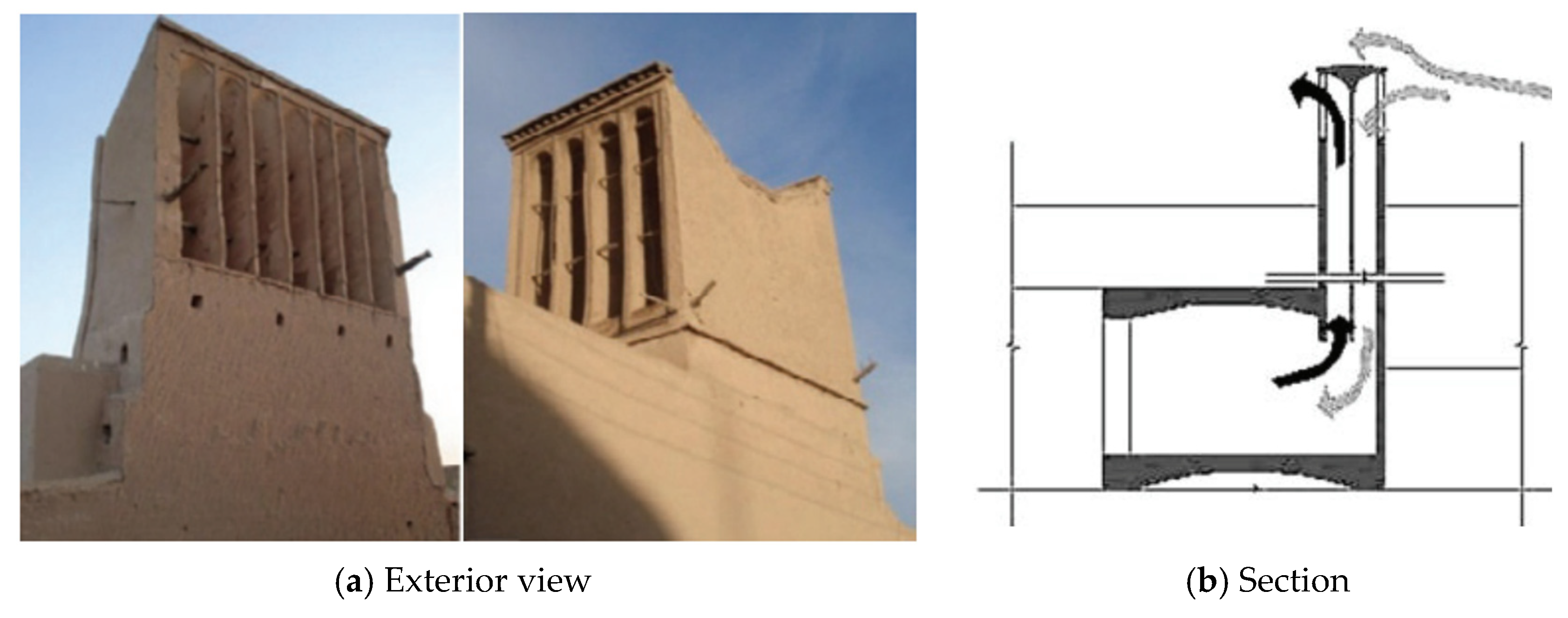





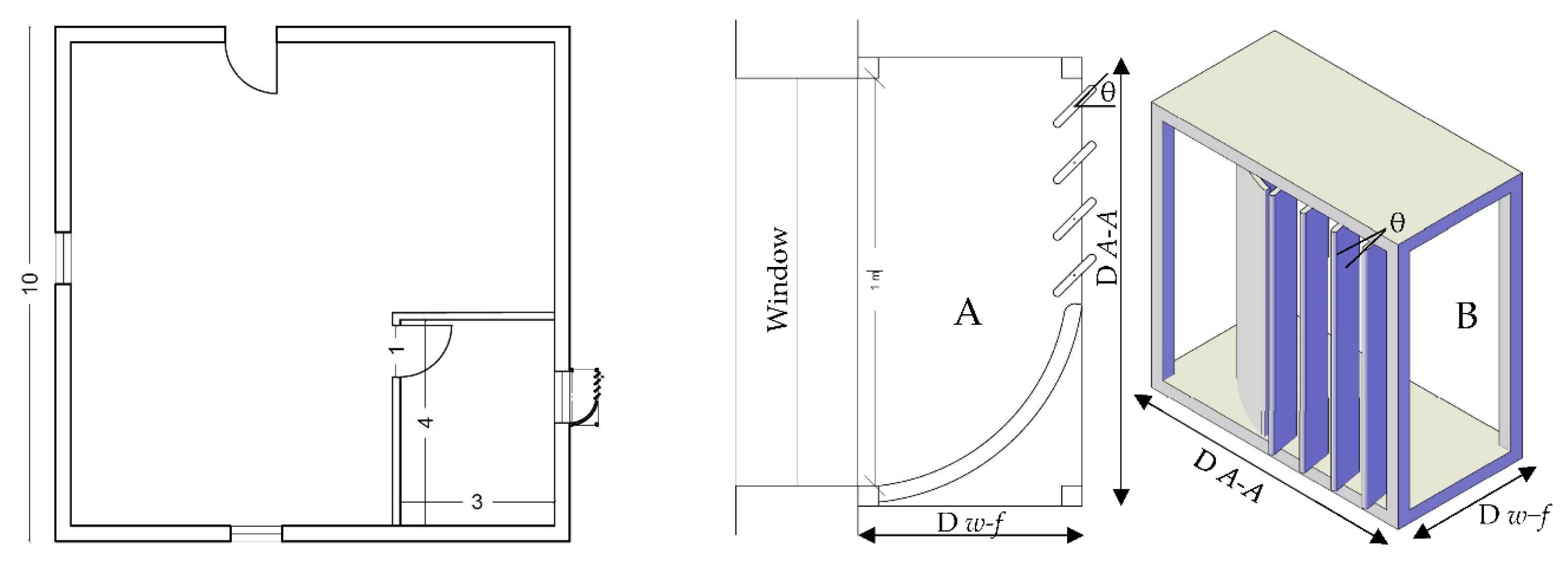







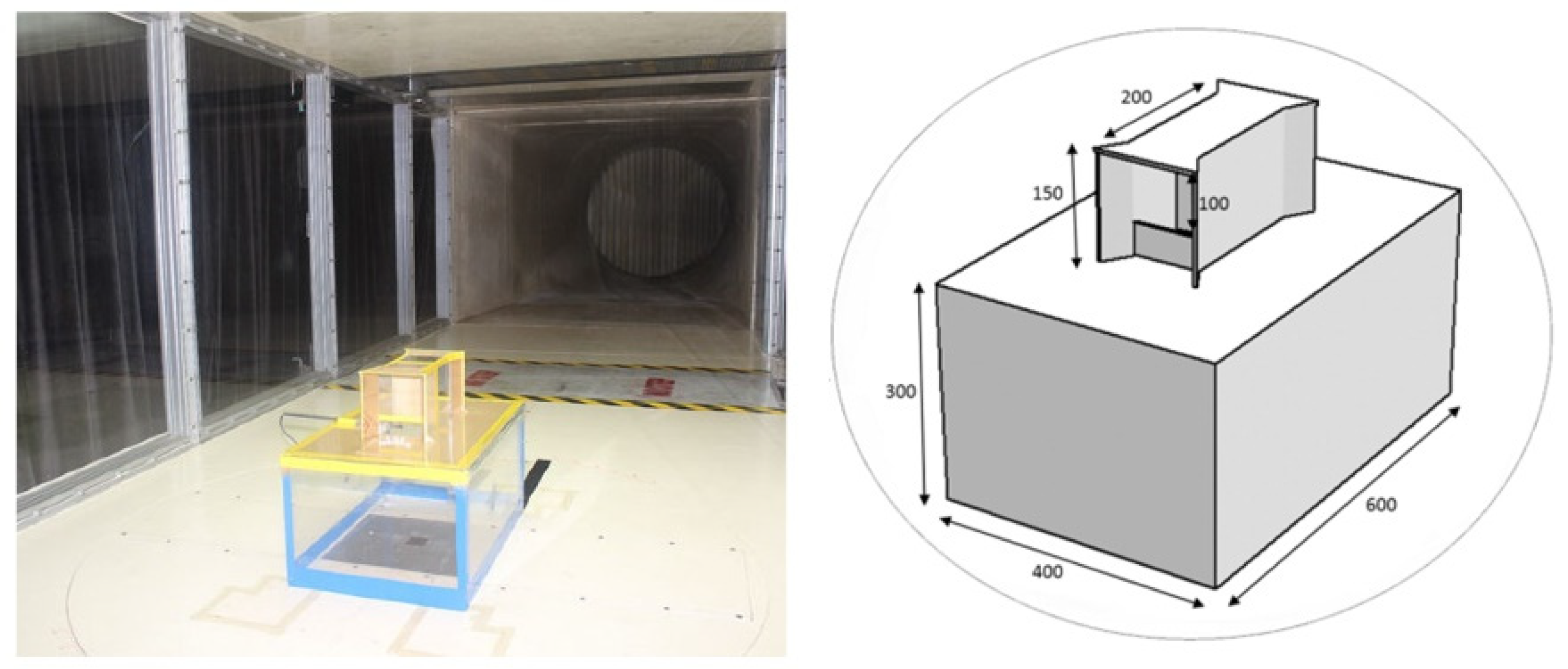
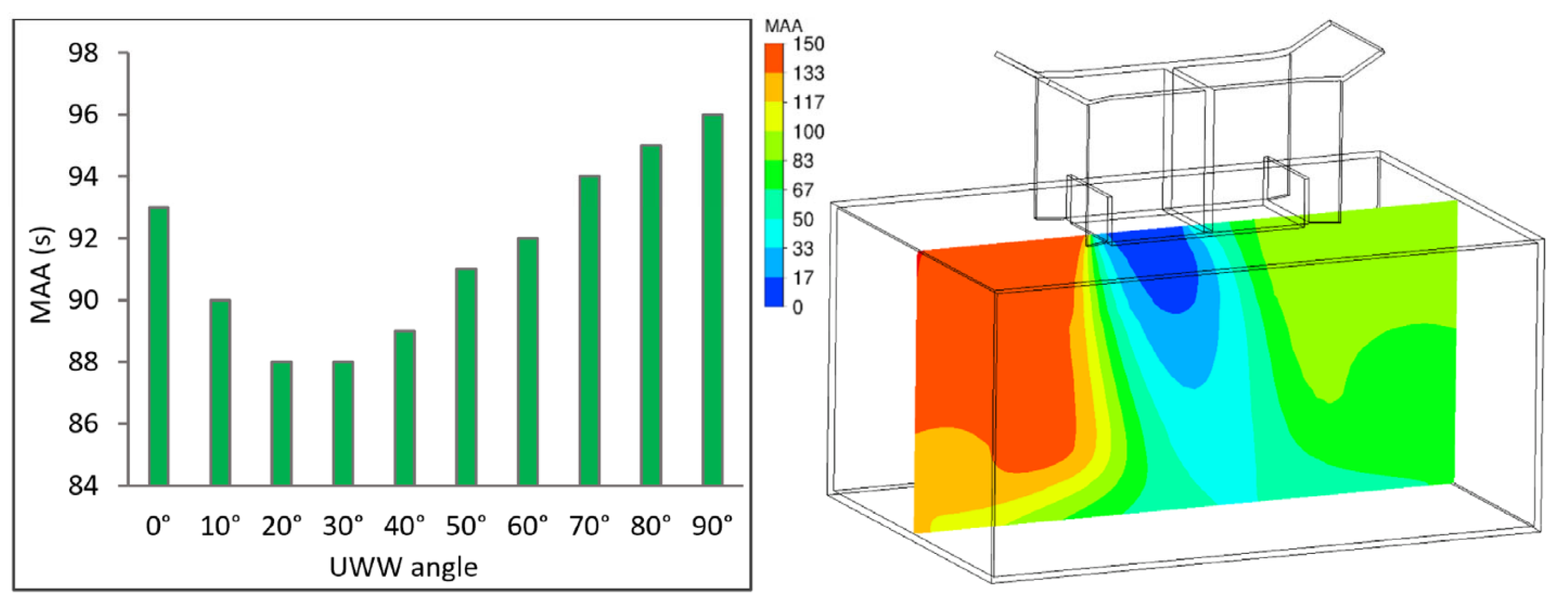


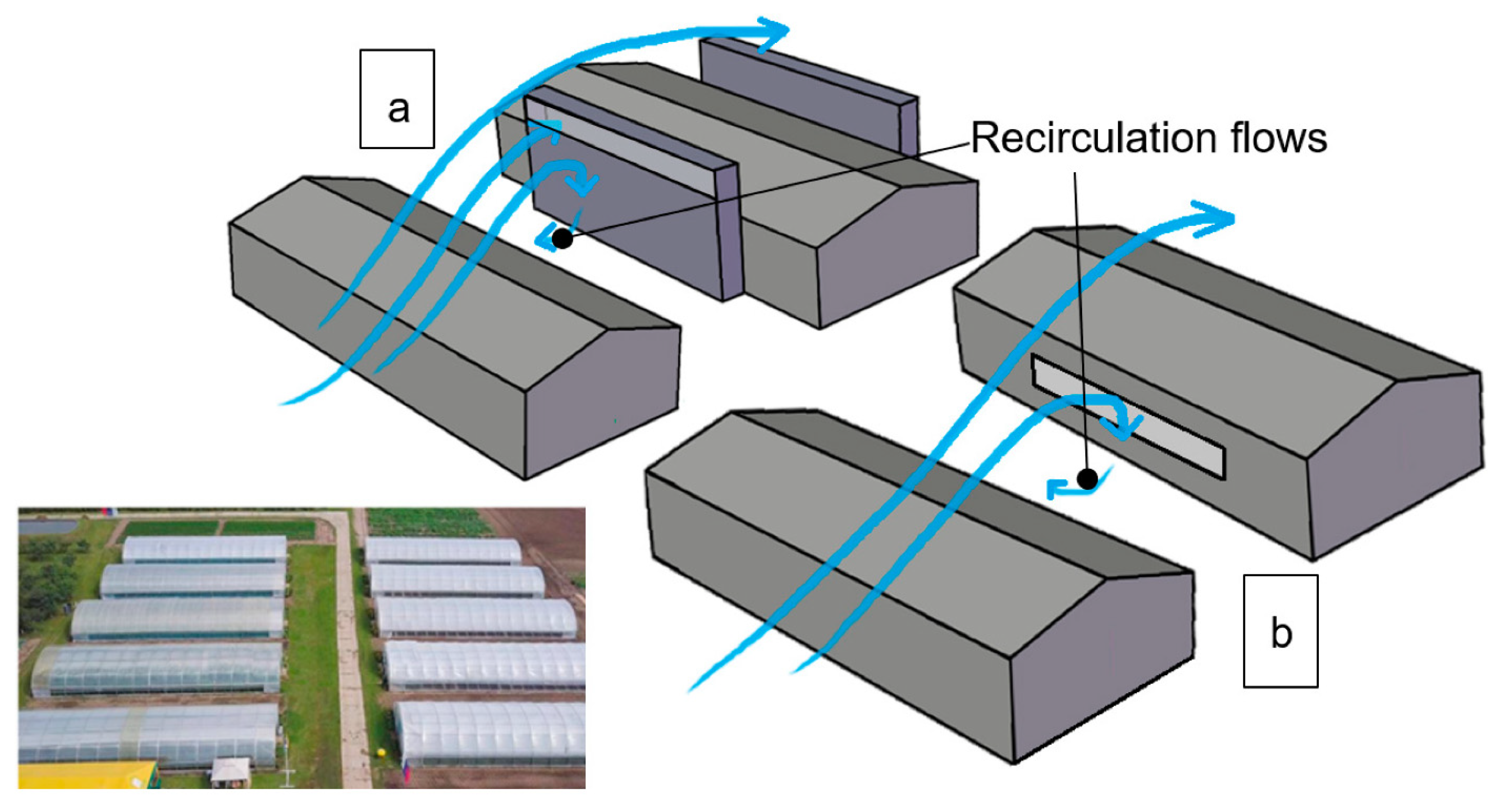


Disclaimer/Publisher’s Note: The statements, opinions and data contained in all publications are solely those of the individual author(s) and contributor(s) and not of MDPI and/or the editor(s). MDPI and/or the editor(s) disclaim responsibility for any injury to people or property resulting from any ideas, methods, instructions or products referred to in the content. |
© 2024 by the author. Licensee MDPI, Basel, Switzerland. This article is an open access article distributed under the terms and conditions of the Creative Commons Attribution (CC BY) license (https://creativecommons.org/licenses/by/4.0/).
Share and Cite
Sirror, H. Innovative Approaches to Windcatcher Design: A Review on Balancing Tradition Sustainability and Modern Technologies for Enhanced Performance. Energies 2024, 17, 5770. https://doi.org/10.3390/en17225770
Sirror H. Innovative Approaches to Windcatcher Design: A Review on Balancing Tradition Sustainability and Modern Technologies for Enhanced Performance. Energies. 2024; 17(22):5770. https://doi.org/10.3390/en17225770
Chicago/Turabian StyleSirror, Hala. 2024. "Innovative Approaches to Windcatcher Design: A Review on Balancing Tradition Sustainability and Modern Technologies for Enhanced Performance" Energies 17, no. 22: 5770. https://doi.org/10.3390/en17225770
APA StyleSirror, H. (2024). Innovative Approaches to Windcatcher Design: A Review on Balancing Tradition Sustainability and Modern Technologies for Enhanced Performance. Energies, 17(22), 5770. https://doi.org/10.3390/en17225770




